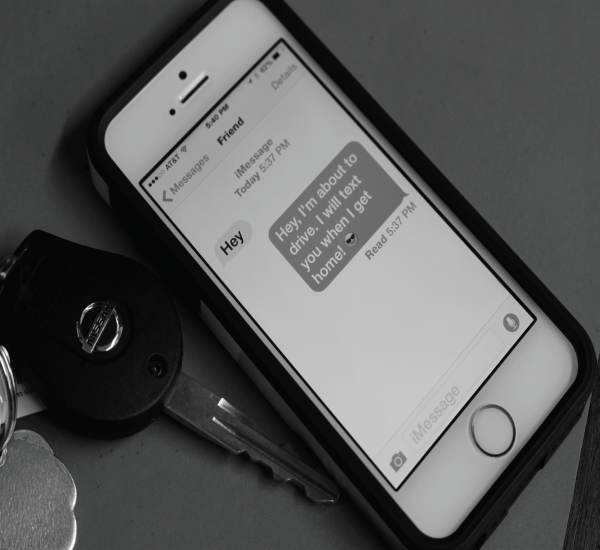

Photo Credit / Amy Lukac
By Richard MacTough
SC Staff Writer
New research has shown that cell phones play a primary role in teen car accidents.
The AAA Foundation of Traffic Safety did a study involving recorded footage of teens driving; a shocking discovery was made. Teens were caught multitasking when on the road.
Distraction is the cause of 60 percent of moderate to severe crashes.
Additionally, the passengers in the vehicle also greatly affect the abilities of the driver. Many young drivers become easily sidetracked when having conversations and interacting with friends in the car.
There are many things that should be done to decrease the risk of teen car accidents across the United States.
Awareness needs to be raised about car accidents resulting from distraction. Most lectures discuss drunk driving, but the causes of accidents while sober are rarely explained and warned against.
I believe that there should be an event once a year on campus to allow students to participate and learn how to stay safe on the road.
It should be interactive and include surveys, games, etc. It is important to have students engaged.
Parents need to have a role in their child’s safety behind the wheel as well.
Parent’s however, seem to be only marginally better about avoiding distraction and cell phone use while operating motor vehicles.
I learned from experience that my mother will text on the phone as she is driving, and it can be nerve wracking to know how dangerous it is.
A parent’s child can learn from them, and if they are misinformed by their parent’s example that texting while driving is fine, then they will do the same.
Parents, please, leave your phones out for later. The AAA advocates prohibit cell phone use of all teenagers, but parents should be included as well.
Also, keep in mind that it is fine to have friends in the car, but eyes need to stay focused on the road.
Do not look to peers to talk with them; just one distraction may have severe consequences.
The average reaction time is 2.1 times slower slower when interacting with passengers.
This could be fatal for the driver, passengers, and others driving on the road.
AT&T however, has a new app that will text your friend back when he or she texts you with an automatic message. You are able to either create a message and set it on default, or there are others you can choose from.
Their hashtag, #X has been used numerous times by participants as well as celebrities.
AT&T also has a bumper sticker that reads, “Texting & Driving… it can wait.”
Cell Phones can wait, so please, do no text while driving. If it is essential to respond back, just pull over for a moment.
If you need to get somewhere, let the person know that you’re driving, and will contact them back when it is safe.
Consider using Bluetooth, be more focused on the road, and try not to blast your music if it will cause a distraction. Do not be another statistic.
Email Richard at:
rmactought@live.esu.edu
